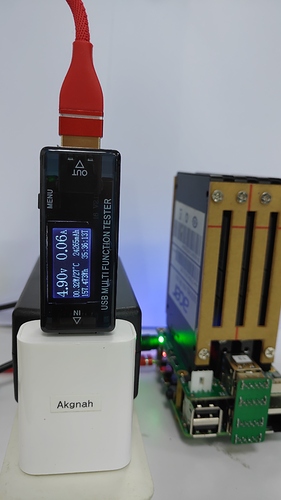With the current QUAD SATA Hat you lose access to the GPIO’s, for example the UART0 that is so useful for troubleshooting. Perhaps in a next revision of the product + case you could provide access to the non-used GPIO pins by for example
- providing a 90 degree angled female GPIO-pin block facing the case wall with a slot/opening in the case so you could access the available GPIO positions from the outside
- extending the pins on the top of the HAT and having a small slot/opening in the case so you could connect a ribbon cable to the GPIO pins
- extending the pins on the top of the HAT and extending them with a ribbon cable to the top of the case
What might also be nice is access to the USB C port of the Pi which is able to function in OTG mode.



 So apologies for leading you astray, it appears that this is not fully working for USB drives.
So apologies for leading you astray, it appears that this is not fully working for USB drives.